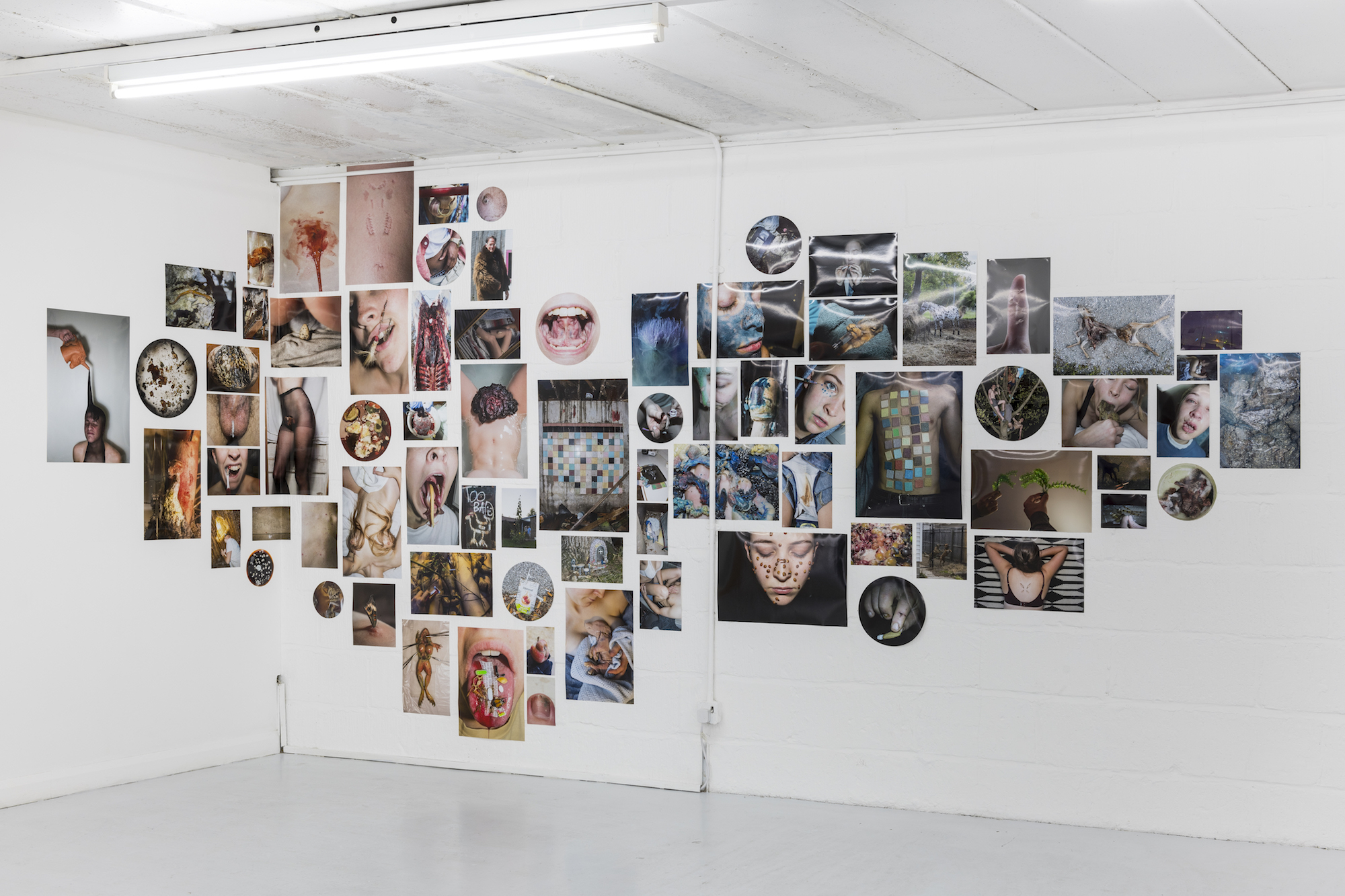
The Experience of Youth, Hannah Barry Gallery
16 May 2018—21 July 2018
Oh, to be young. The fleeting pleasures of teenagehood are the focus of this exhibition, shown through the eyes of three young photographers who use the immediacy of the camera to capture their friends, travels and otherwise ordinary surroundings. “Why do I still find photography a young medium? I see the youth of today exploring it without hindrance, with dependence and reliance on it as a part of their world. An instant expression of persona in seconds through the most mundane-wondrous technology of this contemporary world,” curator Oliver Griffin explains.
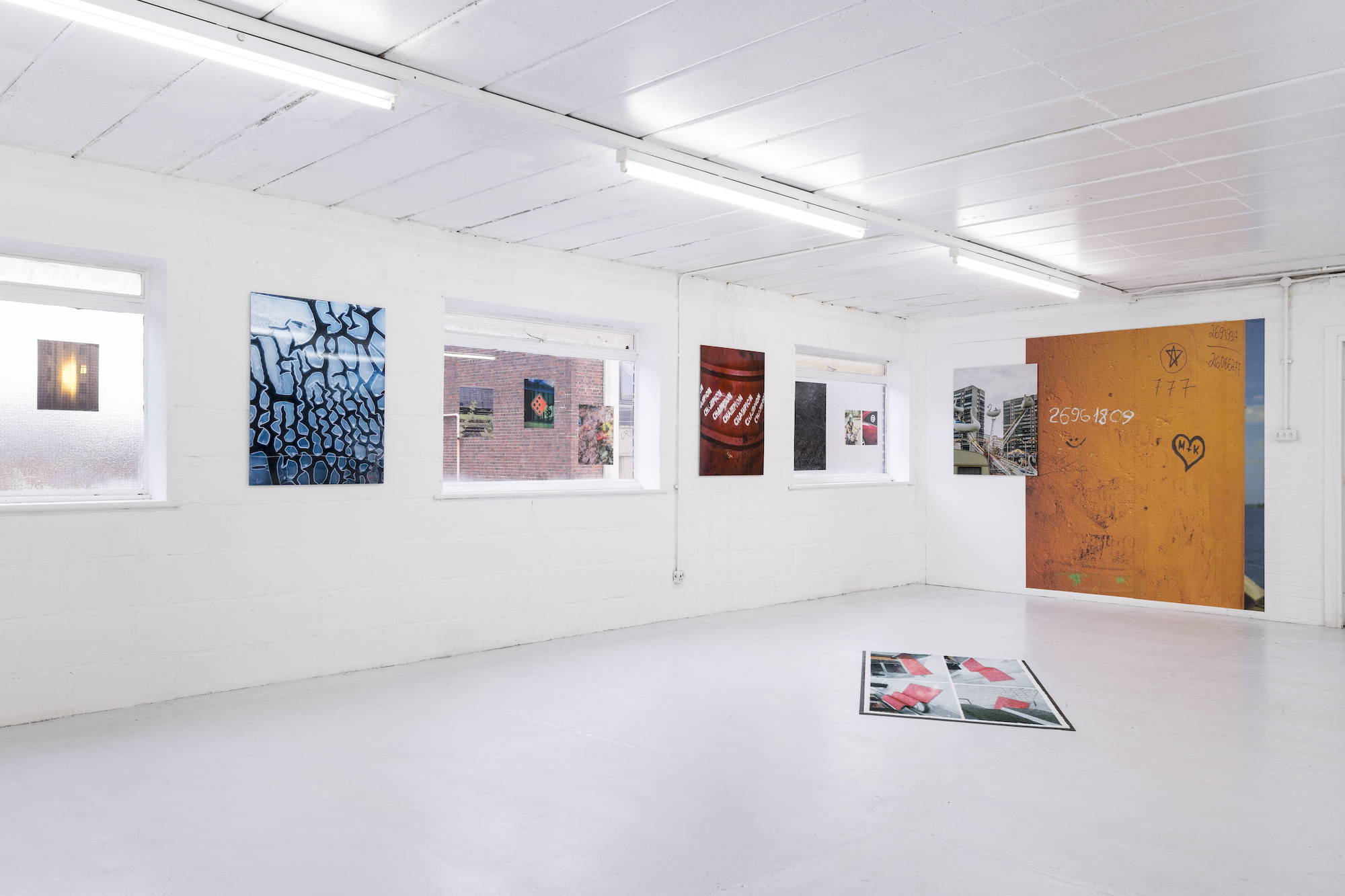
“This is an intimate, expansive exhibition, one which flies in the face of the age of supposed digital disposability”
Robin Haithcoat’s images take a surrealist approach to the body, drawing surprising and at times peculiar visual connections across multiple snapshots, while the large-scale, unpeopled prints of Alex F. Webb invite closer inspection of the surfaces and textures encountered on city walks, at once strange and familiar. Samuel Barry’s six beautiful black and white photos, documenting his former life on the road in the UK, feel the most traditional, and they are the only framed prints in an exhibition that otherwise pushes the boundaries of how images can be displayed. Photographs large and small intersect and overlap throughout, at times stuck on windows with a view out to Peckham behind, while one is draped across the floor itself. This is an intimate, expansive exhibition, one which flies in the face of the age of supposed digital disposability led by the youthquake of Snapchat, Instagram and instant messaging. Today’s young people have a vision of the world, and it is as honest as it is euphoric.

26 May—30 June 2018
There is little typed information to accompany this exhibition, just a single sentence stating: “Dream Works assembles four artists who manipulate existing conceptions of classicism and surrealism, harnessing the power of the irrational and the uncanny.” It is a refreshing change from the often text-heavy exhibition notes that can at times threaten to overwhelm the show itself. It is fitting too that an exhibition focused on the irrational and the uncanny invites responses of the intuitive, highly personal kind, where connections between the four artists are left loose and long. Madelon Vriesendorp, co-founder of the iconic Dutch architecture practice OMA with her husband Rem Koolhaas, is a surprising inclusion in the show, with absurdist, intricately painted watercolour works—one brilliantly depicts the Empire State and Chrysler buildings reclining saucily together in bed. Taken from her output in the 1980s and ‘90s, her presence grounds the newer works of the show in a rich interdisciplinary legacy, building playful connections from art to architecture and beyond.
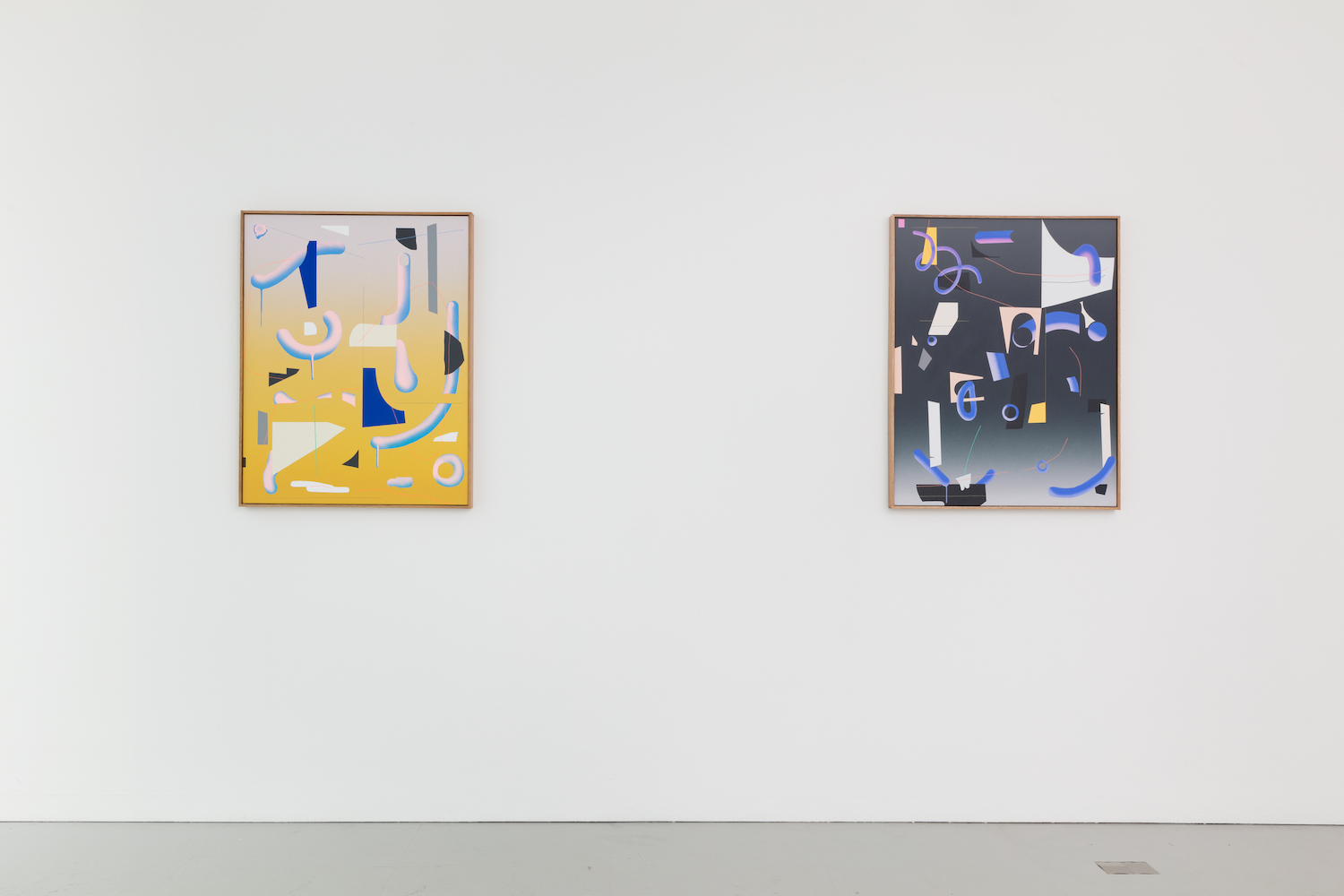
“Throughout the show, ordinary objects and familiar tropes are broken apart and built anew in subtly disjointed ways”
New paintings in acrylic by Luke Rudolf take a more abstract direction, as if the digital gradients of our dreams, infused by the addictive glow of the final nighttime peek at our iPhone—always just one more scroll before putting it in “airplane mode”—have come to life in floating forms and shattered screens. Jonathan Trayte’s sculptural works push this uncanny sensation further still, with a quasi-tropical installation of a wilting palm tree built from bronze and steel, and a series of lumpen vegetable squashes cast from concrete. Nothing is quite as it seems, with a stacked pair of giant watermelons that dominate the room revealed to be little more than wallpaper, a trick of perspective. Throughout the show, ordinary objects and familiar tropes are broken apart and built anew in subtly disjointed ways; ideas collide and it is up to us to pick up the pieces.

The London Open 2018, Whitechapel Gallery
8 June—26 August 2018
A round-up of London’s summer group shows would be incomplete without mention of The London Open, the ever-exciting triennial exhibition chosen entirely from open submission—this year’s twenty-two artists on display were chosen from a record 2600 entries. It is an important exhibition for new discovery, where young talent is given the space and resources to flourish in the historic surroundings of the Whitechapel Gallery, in the heart of the east end. Several of the artists showing here also feature in other group shows currently taking place around the capital, including Jonathan Trayte, Gabriella Boyd and Larry Achiampong, and there is a remarkable array of artistic forms at play here, ranging from painting, video and sound to installation, sculpture, performance and work online.
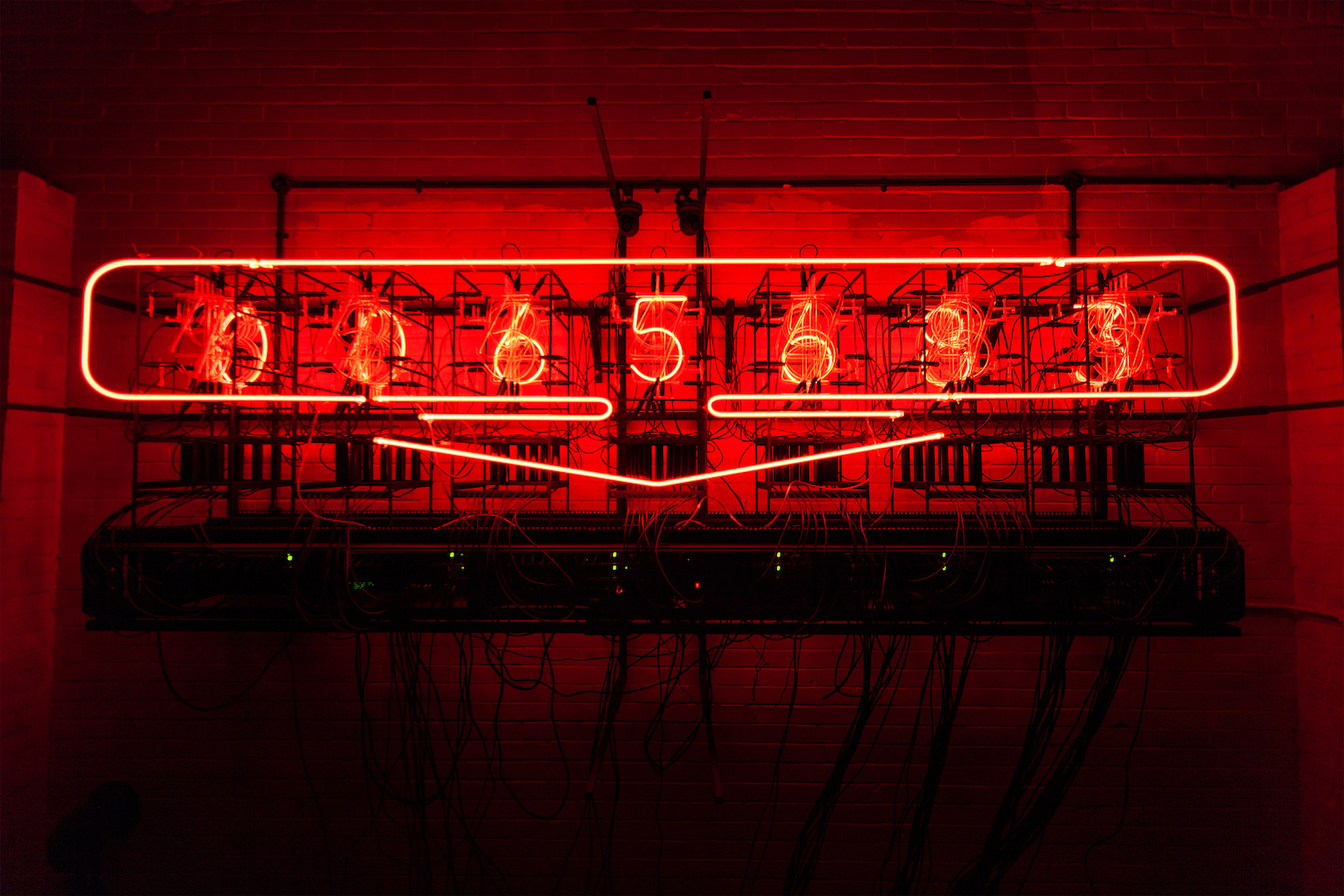
“It is an important exhibition for new discovery, where young talent is given the space and resources to flourish in the historic surroundings of the Whitechapel Gallery”
The artists on show engage directly with the city and its rapidly changing urban context, notably in Rachel Pimm’s investigation into the fabrication of high-end architectural tiles, from initial mineral extraction to the fine finishing or rejection at the end of the production line. Technology is also an important concern for artists here: current V&A artist-in-residence Rachel Ara mounts a monumental neon sculpture which continually displays its own value, calculated from a series of algorithms that reflect criteria such as age, gender, sexuality, race and provenance. Ara’s practice draws on her former career as a computer system designer, and is intimately entwined with feminism and queer theory. For a litmus test of the bright beckoning of contemporary, creative London, this is essential viewing.
- Maria Farrar, Bakery (L), 2017 and Viennese Whirls (R), 2017. Courtesy the artist and mother’s tankstation, Dublin | London
Hypnagogia, Pippy Houldsworth Gallery
22 June—3 August 2018
This exhibition’s title is taken from the transitional state of mind between wakefulness and sleep in which fluid, hyper-associative images are conjured. It is type of consciousness that lends itself well to the figurative painting of the four young female painters included, who draw upon memories and dreams to represent the world around them in indirect, abstract and highly subjective ways. Maria Farrar (who also currently has a solo show at mother’s tankstation) pinpoints surprising and often overlooked details of everyday life, from a half-drunk glass of wine to the lacing on a high-heeled boot, typically emerging from expanses of raw canvas in a style that hovers between illustration and traditional oil painting. These are fragments of the mind, transitory moments left behind after a party when all the guests have gone home.
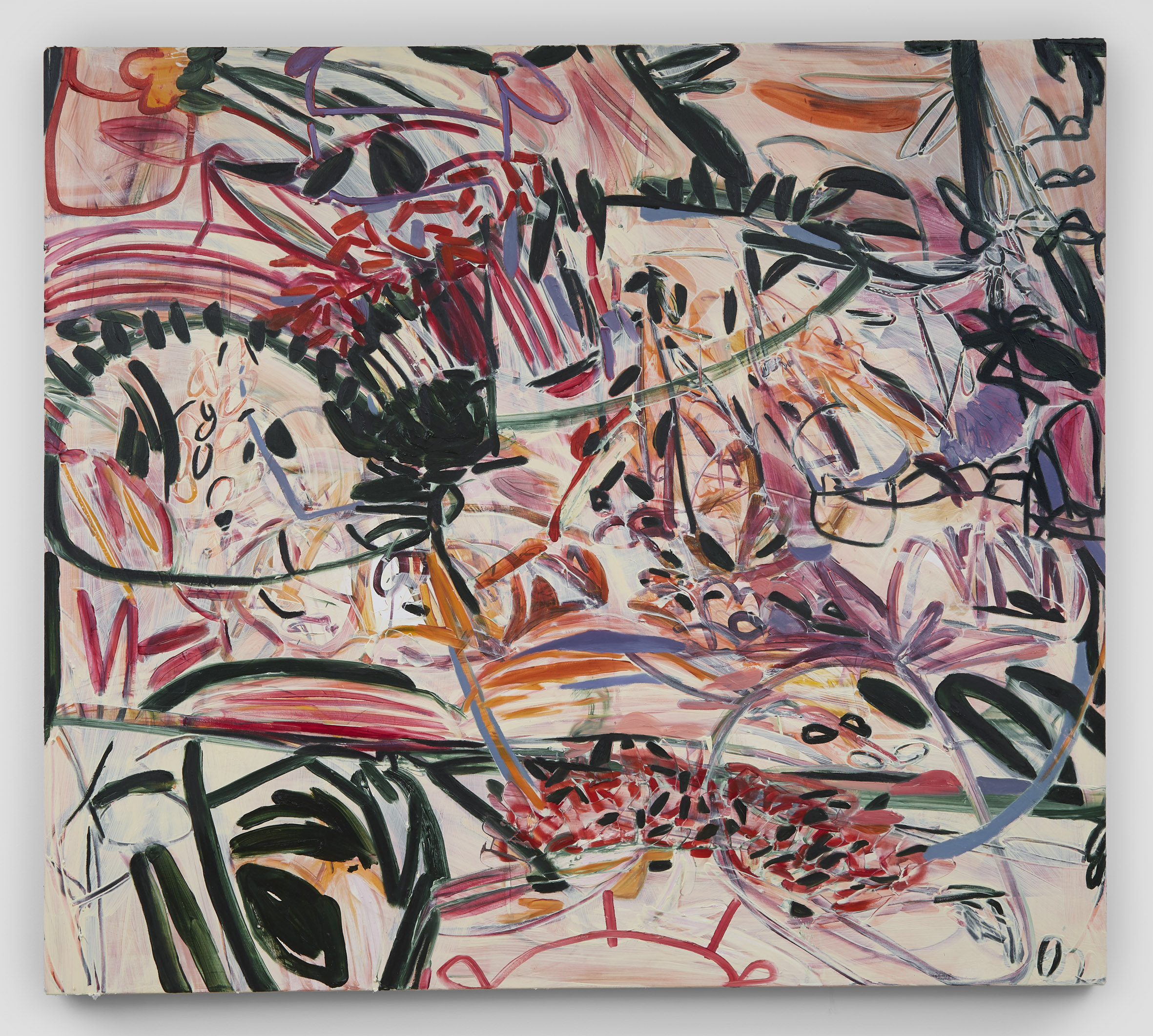
“These are fragments of the mind, transitory moments left behind after a party when all the guests have gone home”
Gabriella Boyd (who recently exhibited at Blain Southern) also captures the sensation of fleeting interactions in everyday life, with evocative, colourful paintings that show figures coming and going, engaged in their domestic routines. While Farrar leaves gaps within the composition of her paintings themselves, Boyd typically crops her scenes to close-ups of limbs or faces, whereby both artists encourage us to imaginatively fill in the gaps ourselves. Meanwhile, Jadé Fadojutimi takes a more abstract approach to painting, with expressive brushstrokes that convey as much an emotional state as her surroundings. Imaginary scenes take distinctive shape in Makiko Kudo’s paintings, vividly conjured in hyper-saturated blues and greens of brooding skies and lush vegetation, escapist landscapes that suggest a dreamlike state.

Talisman In The Age Of Difference, Stephen Friedman Gallery
5 June 2018—21 July 2018
This new show is a remarkable achievement by its curator, the British-Nigerian artist Yinka Shonibare, bringing together the work of more than twenty artists of African origin, as well as those who empathise with African resistance and representation, to explore ideas of magic and subversive beauty. The gallery is filled with works that explore the political power of protest and the assertion of difference, in an eclectic selection that spans painting, sculpture, drawing and other objects from the early twentieth century to the present day. The central image of the talisman is key, drawing heavily upon the connotations of spirituality, belief and personal mythology, while expanding also to consider identity politics in post-colonial Britain.

“The gallery is filled with works that explore the political power of protest and the assertion of difference”
Lubaina Himid and Isaac Julien tackle this colonial past head-on in, while younger artist Larry Achiampong’s series Glyph (2013-14) questions the racism of contemporary Britain. The series assumes the group portrait format familiar from family photo albums, but superimposes black circles with unsettlingly red lips over individual faces, in an uncomfortable allusion to the “golliwog” rag dolls popular in Britain in the late nineteenth and early twentieth century. It is a disconcerting reminder of the ability of stereotypes to dehumanise their subjects, and interrupts the intimacy of the family portrait with an assertion of the many ongoing domestic forms of racism in Britain and beyond.
Meanwhile, William Kentridge’s meticulously drawn and densely layered works confront South African history with a lyrical expressionism entirely his own, and mixed-race Genevieve Gaignard (who shows for the first time in the UK in this exhibition) pushes up against the cliches of black identity in photographic self-portraits that draw on everything from the kitschy aesthetic of John Waters to the aspirational glamour of her hometown of LA.






